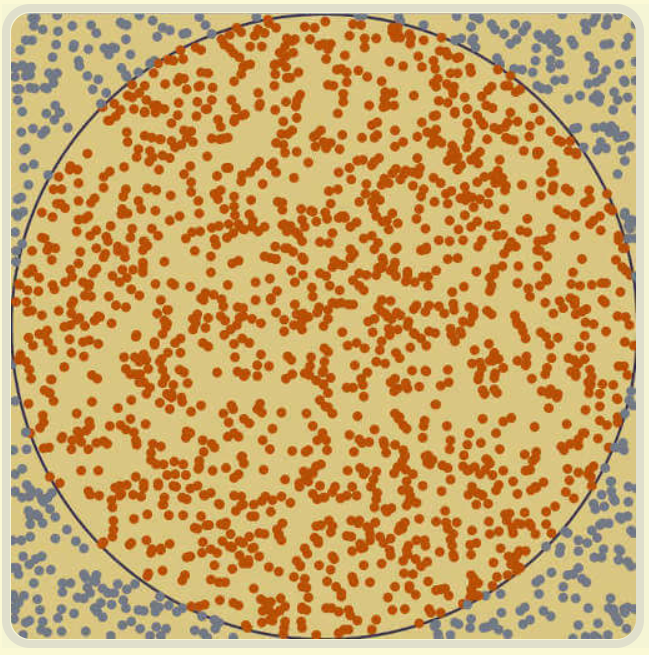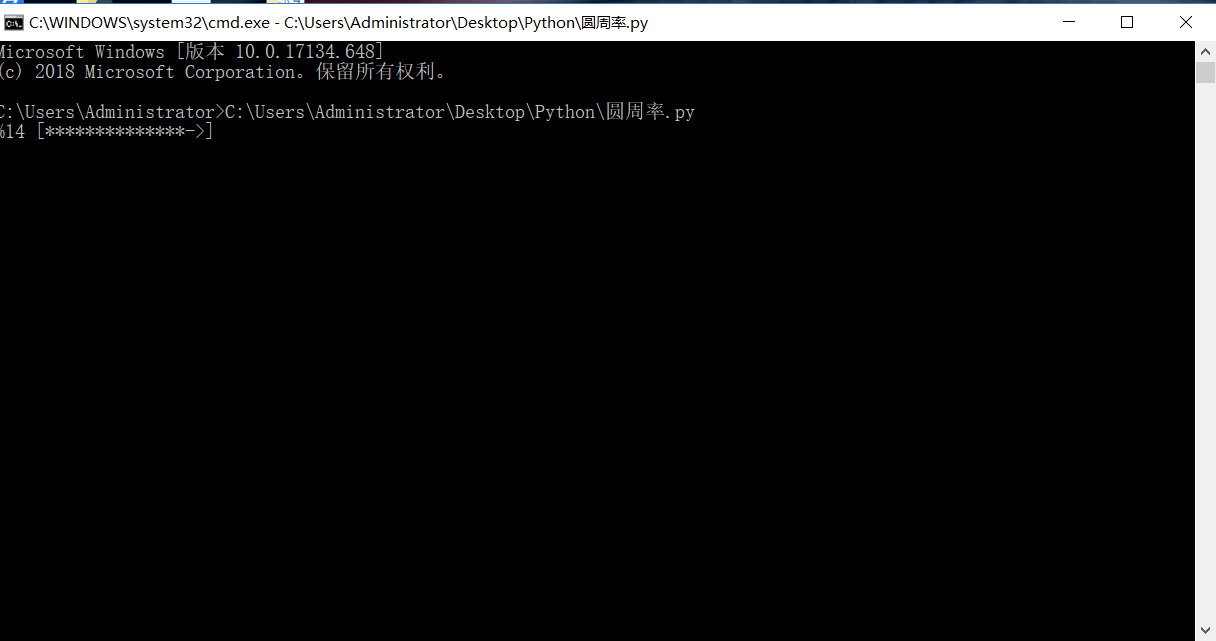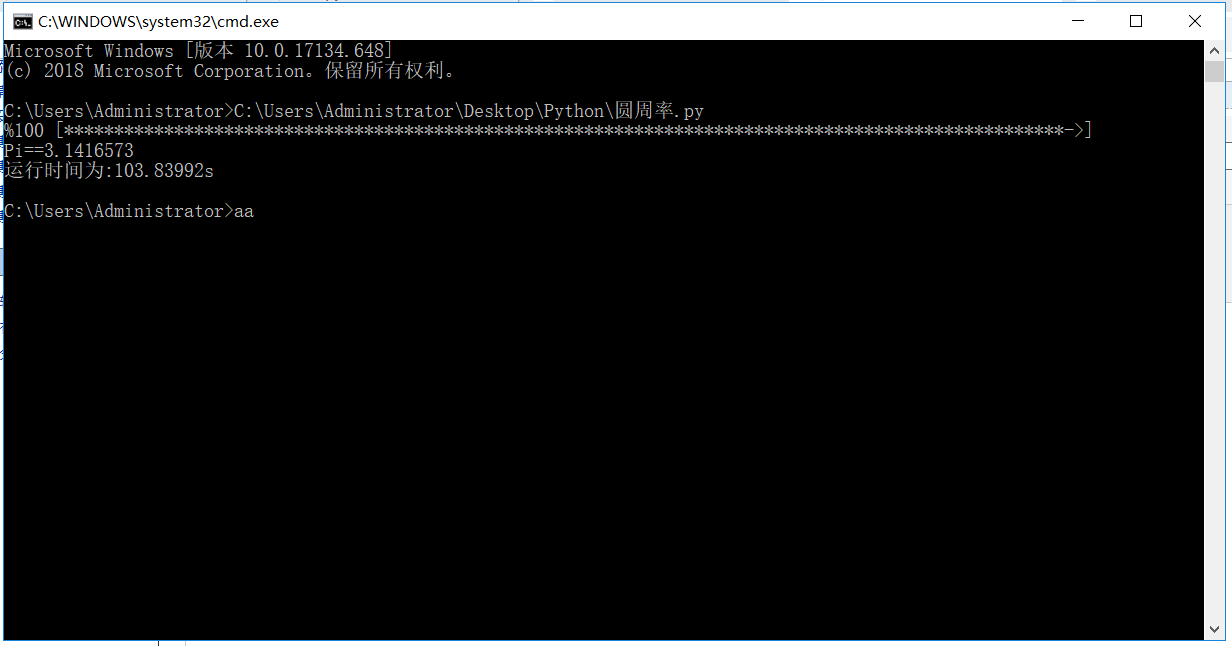π的计算
1.π的来历
π即圆周率,定义为:园的周长和直径之比,是一个常数。通常用希腊字母π来表示。π=3.14159265.....,通常用π=3.14进行计算。英国人琼斯在1706年首次使用π,代表圆周率,但是没有被采用,后来,欧拉予以提倡,才渐渐被推广开来。此后π成为圆周率的专用符号。π的历史是饶有趣味的。对于π的研究程度,在一定程度上反映一个地区和时代的数学水平。
2.π的计算方法
法1:Wallis公式的计算方法(沃利斯公式)

法2:蒙特卡罗方法(抛点法)

3.代码实现
法1:Wallis公式的计算方法(沃利斯公式)
1 from time import perf_counter 2 def Dt(i): 3 N = pow(10,p) 4 a = int((i/N)*50) 5 b = 50 - a 6 Y , N = '*' * a , '.' * b 7 print("\r计算中:{:3.0f}% [{}->{}] {:.2f}s".format(2*a,Y,N,perf_counter()),end='') 8 9 p = eval(input('计算Pi精确到小数点后几位数:')) 10 print('\n{:^70}'.format('计算开始')) 11 a,b,pi,chu,i,j=2,3,1,2,1,0 12 perf_counter() 13 while (i<=50000): 14 chu=a/b 15 pi*=chu 16 i+=1 17 if i%2==0: 18 a+=2 19 else: 20 b+=2 21 Dt(j) 22 print('\n{:=^70}'.format('计算完成')) 23 print('\nPi的计算值为:{}'.format(round(pi*4,p)))
注:由于该算法并不熟悉,无法使其正确输出(循环停止的条件无法确定)
法2:蒙特卡罗方法(抛点法)
1 from random import random 2 from math import sqrt 3 from time import perf_counter 4 DARTS=100000000 5 hits=0.0 6 b=1 7 perf_counter() 8 for i in range(1,DARTS+1): 9 x,y=random(),random() 10 dist=sqrt(x**2+y**2) 11 if dist<=1.0: 12 hits=hits+1 13 if i== DARTS*0.01*b : 14 print("\r%{} [{}->{}]".format(b,'*'*b,'-'*(10-b)),end="") 15 b+=1 16 pi = 4* (hits/DARTS) 17 print("\nPi=={:.7f}".format(pi)) 18 print("运行时间为:{:.5f}s".format(perf_counter()))
4.结果显示



由图知:运行完成需要接近104s的时间